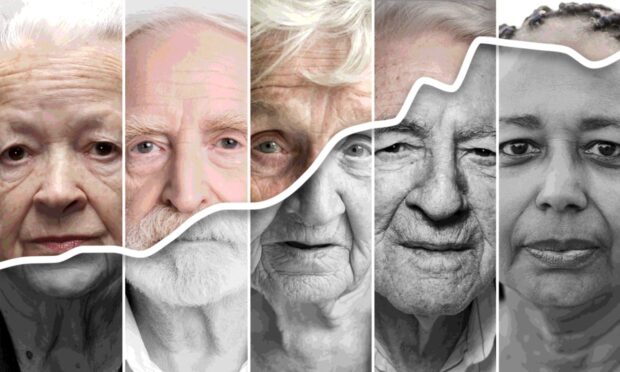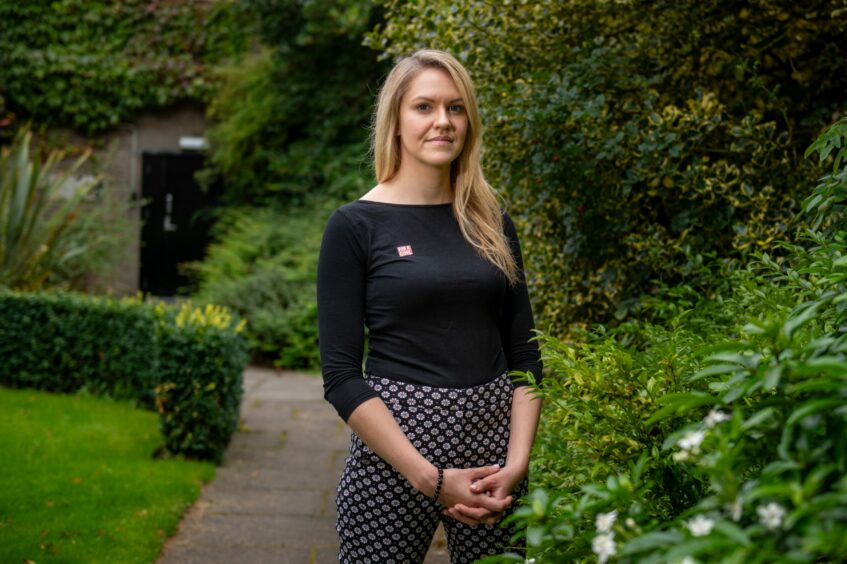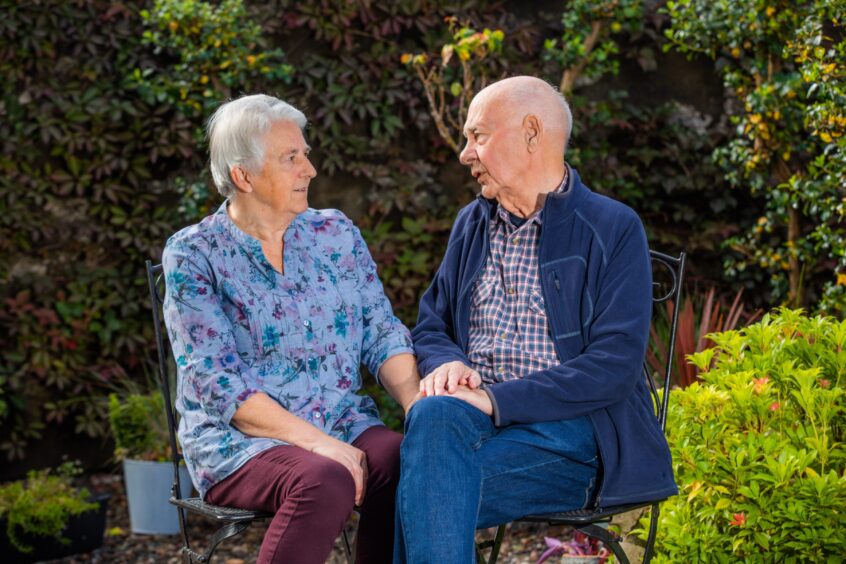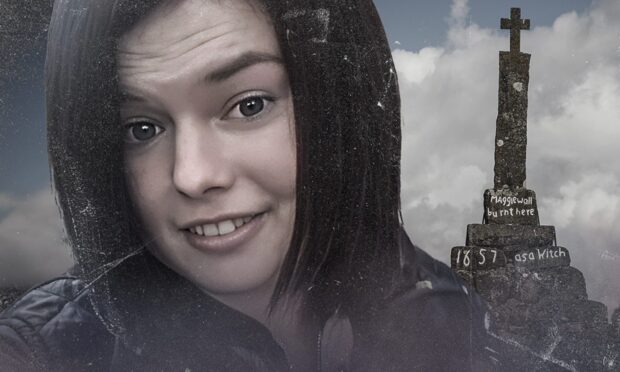Alzheimer’s and dementia touch almost every family in our communities.
Whether it is robbing our loved ones of their cherished memories or piling pressure onto relatives who often act as carers, the impact is undeniable.
Now The Courier’s data team can reveal the true ramifications of those diseases in Tayside and Fife.
Our analysis reveals:
- Deaths linked to dementia have more than tripled across Scotland from 2000 to 2022 – including in Dundee and Fife.
- More than six in 10 long-stay residents in our care homes for older people have some form of dementia. Dundee is second in the country for the highest proportion of care home residents with the disease.
- Women in Scotland are almost twice as likely to die from dementia than men.
- Dementia patients who had their hospital discharges delayed over the availability of a care home bed reached a record high in 2023.
- Self-funded nursing care costs have risen from £667 a week in 2012 to £1,226 in 2022 in Dundee. Perth and Kinross, Angus and Fife all have weekly charges above £1,100.
Reacting to our findings, a leading researcher has said there has not been enough urgency in tackling the devastating conditions – especially when you compare the reaction to finding a vaccine for Covid-19.
As part of our investigation, we also spoke to those living with dementia and their families who told their stories in a series of videos.
Our investigation saw us use data from a range of sources, including the National Records of Scotland, Public Health Scotland and Freedom of Information requests.
Scotland’s dementia and Alzheimer’s deaths
Dementia encompasses more than 100 different types of diseases and symptoms, with Alzheimer’s being one of the most common.
All of the diseases damage brain cells yet can have different effects on the individual – but their toll on Scotland appears to be rising.
Alzheimer’s deaths alone have also risen sharply in Scotland. From 634 in 2009 to 2,652 last year.
And the trend is clear in local authorities, too.
In Dundee and Fife, dementia and Alzheimer’s deaths have more than tripled from 2000 to 2022.
And the trend is expected to continue with studies forecasting the number of people living with the disease globally will further triple by 2050.
‘Not enough urgency’ to combat Scotland’s worrying dementia statistics
Dr Fiona McLean, a University of Dundee researcher specialising in dementia, said more preparation, and crucially money, is needed to cope with the trends.
“I don’t think there is enough urgency,” she said.
“The only thing that killed more people in the UK during the pandemic was dementia.
“I think Covid and the development of the vaccine was a really fantastic example of when you remove red tape and fund things properly and how quickly treatments and cures can be developed.
“I think in terms of, are we ready for those numbers to triple by 2050? No, we’re not.”
Of those, the Western Isles was the highest with its dementia death rate reaching 108.86.
However, looking only at Alzheimer’s shows a different distribution across Scotland.
How does age impact dementia deaths?
The rise may, in part, be down to increasing life expectancy, according to Daniel Burns of the National Records of Scotland.
The head of vital events statistics said: “Deaths from dementias are one of the highest causes of death in Scotland. The mortality rate for 2022 is twice what it was in 2000.
“The increase may partly be driven by increasing life expectancy, particularly among females, and the high number of children born in the post war years reaching the age at which Alzheimer’s and other dementias are the leading cause of death.”
In 2022, over four in five dementia deaths recorded were among those over the age of 80.
The prevalence rates for dementia rise from 0.1% for people under the age of 64 to 15.9% of people aged over 80, according to Public Health Scotland (PHS).
So areas with a higher percentage of residents over the age of 65 tend to have a higher dementia rate.
Angus, where more than a quarter of the population was 65 or older, had a dementia death rate of 94.11 per 100,000.
Dundee, with just under 18% of its population of that age, had a death rate of 63.84.
Dementia and Alzheimer’s were the second leading cause of death for all ages in 2022.
Deaths among women push dementia to the top slot for both sexes.
But it only becomes a top five leading cause for women in the 65-79 age bracket.
For both women and men over the age of 90, it is the leading cause of death.
Lifestyle choices coupled with age can increase risk
Scotland’s ageing population could see the rise in dementia continue.
The first set of figures from the most recent census highlighted that the country now has more than one million people aged 65 and over.
But Dr McLean explained that lifestyle choices are linked to the age-related risk.
The Alzheimer’s Research fellow studies how other conditions such as diabetes impact the “blood brain barrier” which she described as a “a bouncer in a nightclub” – allowing vital nutrient in and keeping out waste products.
“Age is one the biggest risk factors,” she said.
“From personal experience, I saw two very different ways of ageing in my grandparents.
“My grandpa, on my mum’s side, he had type two diabetes, he had a very high salt intake, and he smoked a pipe. He developed mixed dementia.
“I saw the last ten to 12 years of his life. I wouldn’t really call it living, if I’m honest.
“And then I have my grandmother on my dad’s side, who lived a very healthy active life and she lived until she was 100.”
“Ageing doesn’t need to mean that your memories disintegrate and you lose your abilities to have good cognition.
“It’s made me very passionate about really saying to people – this isn’t normal. If you look at the brains of people who have these dementias, or these diseases related to dementia, they have things that shouldn’t be there.”
‘Higher incidence’ of dementia in women in Scotland
Overall, women across Scotland are more likely to die from dementia than men.
In 2022, the number of deaths amongst women were almost double those among men – with 4,139 and 2,138 respectively.
This is mirrored within local authorities. In the same year, Dundee City recorded 47 dementia deaths among women and 28 among men.
The split was even more apparent in Fife where there were 167 deaths for women and 82 for men. In Angus it was 52 to 32 and in Perth and Kinross it was 63 to 38.
While PHS states the disparity is linked to higher life expectancy, Dr McLean said it might not be that simple.
She said: “There’s been a lot more in-depth studies done which have revealed that actually, once you normalise for that higher life expectancy, you still get a higher incidence of dementia in women, and therefore higher incidence of death.”
The reasons are still being researched, but she said oestrogen levels are one possible contributing factor that needs more exploration.
Stark statistics of dementia in Scottish care homes
The vast majority of Alzheimer’s disease and dementia-related deaths take place in care homes.
And the gap between care home deaths and those recorded in other locations has grown significantly since 2000.
In 2000, 834 dementia patients died in hospital while 1,088 deaths were noted in care homes.
But last year, care home deaths were more than three times higher than those in hospitals with 3,989 compared with 1,366.
Meanwhile fewer than a thousand people with dementia died at home or in non-institutions last year.
Deaths recorded at those locations have also increased significantly since 2000 – from 91 to 869 in 2022.
Cases of dementia in Dundee care homes proportionally high
In Dundee’s care homes for older people, three in four long stay residents had dementia in 2022.
The Public Health Scotland Care Home Census gathers data from the vast majority of homes across the country.
Across Scotland, more than half (62.8%) of all the long-stay residents in care homes for older people are estimated to have a form of dementia.
In other words, of the estimated 29,465 residents in 2022 – 18,405 had dementia.
The figure, which includes both medically and non-medically diagnosed dementia, has been steadily rising since 2012 when it sat at 59.2%.
However, it saw a slight year-on-year drop from 2021 when it reached 64.5%.
Meanwhile, in Dundee, where the figure is even higher, 76.88% of these residents had dementia.
It was the second highest proportion across the country, only behind Falkirk.
Fife, Perth and Kinross and Angus were all below the Scottish average in 2022 with 61.6%, 58.23% and 58.44% respectively.
Scottish dementia care expert and nurse, Professor June Andrews, attributed the rise to “a number of interwoven causes”.
She told the Courier: “Many people in the past would have been there with dementia but didn’t have a formal diagnosis, so as the diagnosis increases it looks like the numbers increased.
“Once upon a time people went to a care home as a lifestyle choice sometimes, but now people mainly go as a last measure at the end of life, and the closer you are to the end of life, the more likely it is that you have dementia.”
Professor Andrews, who is the author of ‘Care and Caring for Older Relatives’ explained that two further reasons include ageing demographics and reduced stigma in talking about the disease.
Is dementia care free in Scotland?
The cost of dementia does not just extend to the lives lost – the financial burden is also increasing.
If a person has been assessed as requiring care by their local authority, they are entitled to free personal and nursing care in Scotland.
However, they can be expected to cover other costs, such as the accommodation itself, dependent on their capital and assets.
Savings or property can have a big impact and it is likely most people will have to make some contribution towards the fees.
Those above the upper limit – £32,750 – are deemed self-funded and those below the lower threshold – £20,250 – will receive council funding.
People within the two limits will need to contribute some costs depending on their capital.
Across Scotland, an average of 34% of long stay care home residents were mainly or fully self-funded in 2022.
In some areas, such as Edinburgh and East Dunbartonshire, almost two-thirds of residents are self funded.
Both Angus and Perth and Kinross surpass the Scottish average with 41% and 44% respectively.
Dundee – with 33% of self-funded residents – and Fife – 31% – fall slightly below the average.
Across the country, the figure has steadily risen from 28% in 2012 with the average remaining the same or increasing each year except 2021.
In Tayside and Fife, Angus saw the biggest rise in self-funded residents – up from 30% in 2012.
What is the cost of dementia care in Scotland?
Most areas do not distinguish dementia prices from other nursing care rates, but those prices vary for each local authority.
The Care Home Census, which PHS carries out each year, provides indication of the cost of nursing care.
The average weekly cost across Scotland has reached £1,200.
Self-funded long-stay residents receiving nursing care could therefore expect to pay £62,000 a year.
The weekly price, however, ranges from £1,645 in Aberdeen to £926 in the Western Isles.
Dundee, Perth and Kinross, Angus and Fife sit closer to the middle of the range with £1,226, £1,167, £1,183, and £1,134 respectively.
While Dundee has become the most expensive in the area, in 2012 residents would have expected to pay the least – £667. Almost half of what self-funded residents on average paid last year.
‘Black hole coming along’ for future generations
Professor Andrews emphasised that most self-funded residents will afford their care through the value of their home.
But that may have to change for upcoming generations as they may not have the same chance to own property or “accrue wealth”.
“People of my age have benefited from a massive increase in the value of our houses which were so cheap that we could afford to buy them when we were young, unlike young people these days,” she said.
“So all that accrued wealth will go into our care, but I don’t know how today’s young people will pay for it when they get old, because they seem not to be accruing wealth the way we did, especially the 2.5million people who bought their council houses in the 1980s and made a killing on the sale of them.
“There is a black hole coming along that will have to be filled with higher taxes or people looking after themselves in future. If you are young, prepare for this.”
She added that greater care needs associated with dementia can make the care more expensive, more of a staffing burden and more time consuming than for residents without the disease.
“This is because they have a non-remitting, fatal illness that is characterised by increased dependency with all aspects of living including eating and drinking, personal hygiene, mobility, emotional care, communication needs,” she added.
And that may be felt outside of care homes, too.
Malcolm Hazelwood told the Courier of his own personal experience with dementia as his wife Pam became his carer.
She said more support is needed for carers to help loved ones at home.
What about publicly-funded dementia care?
Publicly-funded care seems to carry a smaller price tag for councils.
The council costs are updated annually under COSLA’s national care home contract.
But figures based on the expenditure of local authorities and the total number of adults in care indicate that Scottish councils on average spent £652.53 per resident each week in 2021/22.
In Dundee, the figure falls below the 2012 self-funded rate – £629.78.
Fife council may be footing more of the bill with an average cost of £942.86.
That is the fifth highest price from all local authorities, according to the Local Government Benchmarking Service.
The council area also experienced one of the biggest rises from the 2010/11 rate – £470.86.
Dundee, on the other hand, rose by just over £200 over the decade, up from £461.67.
Meanwhile, Perth and Kinross actually saw prices fall from £522.33 in 2010/11 to £485.08 in the most recent available figures.
The average cost in Angus was £619.41, rising from £477.26 in 2010/11.
Delays in dementia care
The rising pressure on dementia care is also clear from data on delayed discharges.
Across Scotland, the number of patients who are experiencing a delayed discharge because they are awaiting a dementia bed appears to be rising.
The highest monthly total, since records began in 2016, was hit in April.
However, these will represent just a fraction of all dementia patients undergoing delays.
In NHS Fife, nearly a tenth of delayed discharges are on average patients with dementia.
Under NHS Fife, from 2018 until April of this year, an average of 7.9% of delayed discharges had dementia.
Of the seven health boards, Fife had the second lowest proportion of dementia patients in their delayed discharges.
In the same time period, on average more than half of all delayed discharges had dementia under NHS Lanarkshire.
Why are delays common in dementia care?
Lynne Garvey, the head of community care services for Fife’s Health and Social Care Partnership said delays are “certainly more common” for dementia patients.
She said: “This is because the individual is more likely to have complex needs and require a package of care involving multiple services, whilst others experience delays linked to guardianship processes.
“That does not mean that we are accepting of any patients delayed in leaving hospital and we are continually working to reduce delays.”
Ms Garvey added that discharge planning now begins at the point of admission to ensure care is available on time.
“We have also recently employed a solicitor to support patients and families when making decisions about the right care,” she added.
“While there is still much work to do, the actions we have already taken are enabling us to reduce delays which has led to a much improved performance.”
NHS Tayside could not provide the requested information.
Seeking help
If you or a loved one need support with dementia, there is a wide network of available options.
The NHS has a list of information which can help carers of family members look after those with dementia.
It provides guidance through common challenges surrounding everyday tasks and needs.
Alongside support from health boards, Alzheimer Scotland offers local services and support across the country.
This includes dementia advisors and resource centres which are provided in every corner of Scotland including Tayside and Fife.
If you or a loved one needs help, use the Alzheimer Scotland service to find resources available near you or call the 24-hour Dementia Helpline on 0808 808 3000.




Conversation